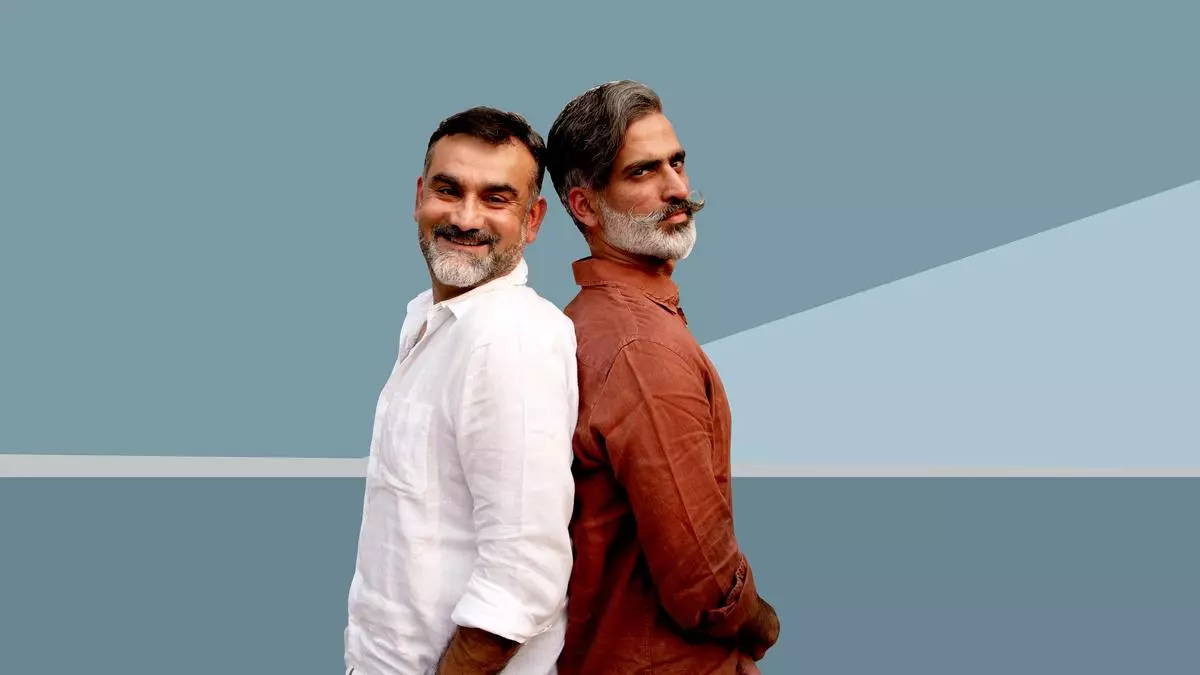Unravelling the mystique of Sabyasachi
.jpg)
It’s always the women who gift the inspirations. For Raj Kapoor it was the woman in white who would flit in and out of his mind and movies; for Christian Dior it was an aunt who imagined herself a princess as she wafted down the staircase in skirts billowing from under-fitted bodices. For Sabyasachi, it was his grandmothers, women of extremely opposite tastes and temperament. And then there was his mother, quite another person, altogether. And others.
In the opulent palace of a store in Mumbai that he has chosen as his flagship, small brass plaques nestle quietly, whispering these stories from the designer’s life. They add to the mystique he carries around him; a person accessible and yet impossible to reach, a smiling boy who won’t grow up and yet, a hard-nosed businessman who has turned his creations into a national craving.
From Two worlds
So, we meet here his two grandmothers. One a minimalist, the other a ‘maximalist.’ The former in austere white muslin saris… the saris we meet again, carrying his label, woven by humble weavers whom he adopts as his own. The latter, exuberant, well-travelled, rich in material wealth, and always accessorised with a ‘khadi batua lined with a pomegranate pink velvet’ from which emerged coins to treat him to ‘ice-lollies, turmeric laced popcorn’ and matinee movie shows. The khadi and the velvet memories of a ‘magic bag’ long gone, recast themselves in myriad ways, all uniquely his own, emerging as it does from memories refracted by time.
Mining the past to bring in a richer present becomes a Sabyasachi signature, as native to his roots as the tiger he has adopted as his symbol. Which incidentally, as a plaque states, he saw first as a tiger head with ruby eyes encrusted on a cane, carried by a sedate, simply- dressed distinguished gentleman sitting by himself through the flurry of a Bengali wedding.
And caught between these two women, the image of his mother, in a ‘turquoise blue Benarasi sari with gold motifs and coral silk thread accents, and a flirtatious baby pink fall.’ A sari hated by his grandmother, possibly the asture one, but which wrapped itself around the son’s mind, as he watched his mother wearing it, her favourite, till it went threadbare. The colour palate of bright contrasts would streak across his early creations, waking up a ‘matching-sari-to-blouse’ world.
Combined with her bobbed hair, an oversized scarlet bindi, delicious gold chandbalis and a turquoise sleeveless blouse’, he loved the scandalous-for-its-time look his mother assayed.
Well, a sleeveless blouse held no scandal in the late 1990s, but dark skinned models, women with sad faces in bridal wear, and bespectacled women carrying studious looks along with their books… could be the chosen attention grabber. And the chandbalis, in his hands, encrusted, dipping into permutations of shapes, joined his jewellery line!
Another story to hang inspiration: the neighbourhood girl who wore straight cut jeans and tucked-in shirts, and read Ayn Rand and Harper Lee. Her ‘more fascinating’ mother ‘wearing white saris with black blouses and men’s shoes, kajal’ who kept her salt-and-pepper waist length hair flowing down to her waist. The music she surrounded her visitor with was by Ella Fitagerald and scented with the paper from the books that lined the walls of her room.
Checkout Sabyasachi’s New York store, and scratch the surface of the collections. And it’s there, in his clothes, and in the design of his stores.
Calcutta: Streets lit by lamplight, camphor smoke mingling with mustard oil fumes; music and dance lessons, or the litany of maths tables floating out of windows; the sky turning a ‘dull rose pink’. It’s a fast disappearing ethos, but he holds it captive, in the ambience he creates in his stores, the clocks on the walls forcing you to travel back in time, the books and the furniture forcing memories to the fore.
Sabyasachi New Flagship Store in Mumbai Photography : Björn Wallander
Birth of the business man
Sabyasachi was, as his plaque reads, eight years old when he designed the look for a school play, crafting wigs out of jute, sourcing clothes from local dresswallas, shiny costumes that burst out of tin trunks as the actors leapt to plunder. He admits to stealing a ‘mid-length, bias-cut, white satin slip’ from his mother’s cupboard, because he’d desperately wanted Snow White to wear it.’ ‘Plaid shirts became aprons, socks became gloves,’ and the next morning the writer-designer-schoolboy ‘was a star.’ Sabyasachi the designer would continue to craft new out of old, adapt and modify, mingling nostalgia with adventure.
And not much later, the birth of the ‘businessman’ he claims he really is, giving the designer in him second place.
At nineteen, creating jewellery inspired by rock and roll, using beads and shells and shiny bric-a-brac he had found in an art shop, adding the ‘flavours of Bengal, gothic colours, chains, distressed mirrors, feathers’ and ‘carrying them in plastic boxes’ to sell. No one paid attention, except an old shop keeper who bought them on consignment. And the self-made jewellery designer struck gold when a lady, enchanted by their subversive charm, paid ₹45 and bought the whole lot.
Reinvestment followed. Bringing in ₹12,000 a month. And the route was obvious. Reject rejection, follow your dream and combine business with art, craft and soul — the Sabyasachi formula.
So carping trolls, and adulating clients matter little. As the Sabyasachi juggernaut rolls on, across continents, carrying nostalgia as its USP.
(The writer is the former editor of Femina, an author and a Consulting Editor with Penguin India)




Leave a Comment